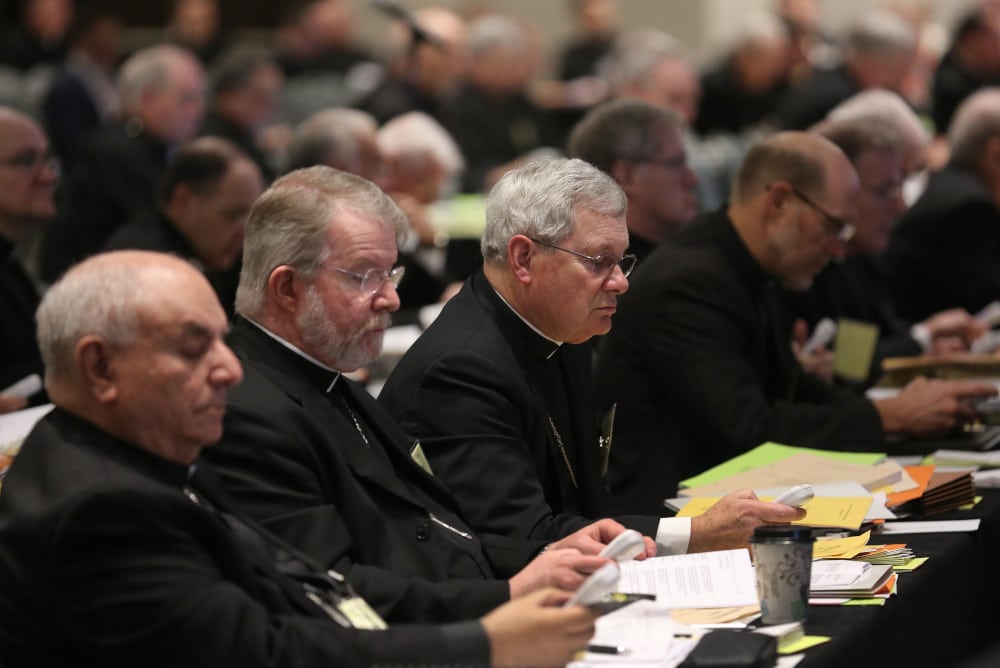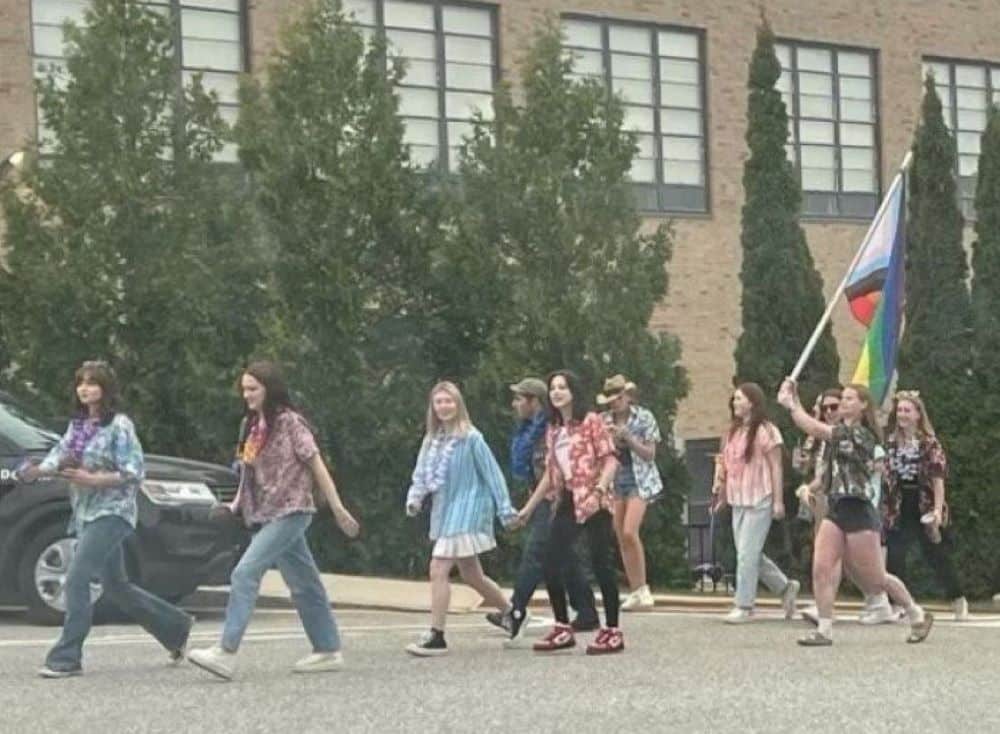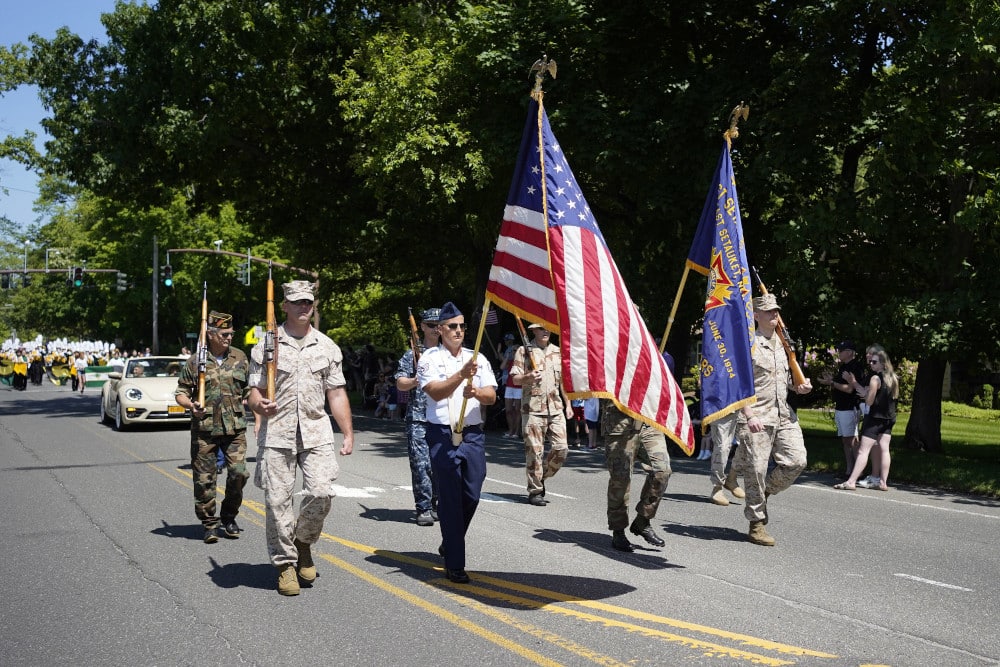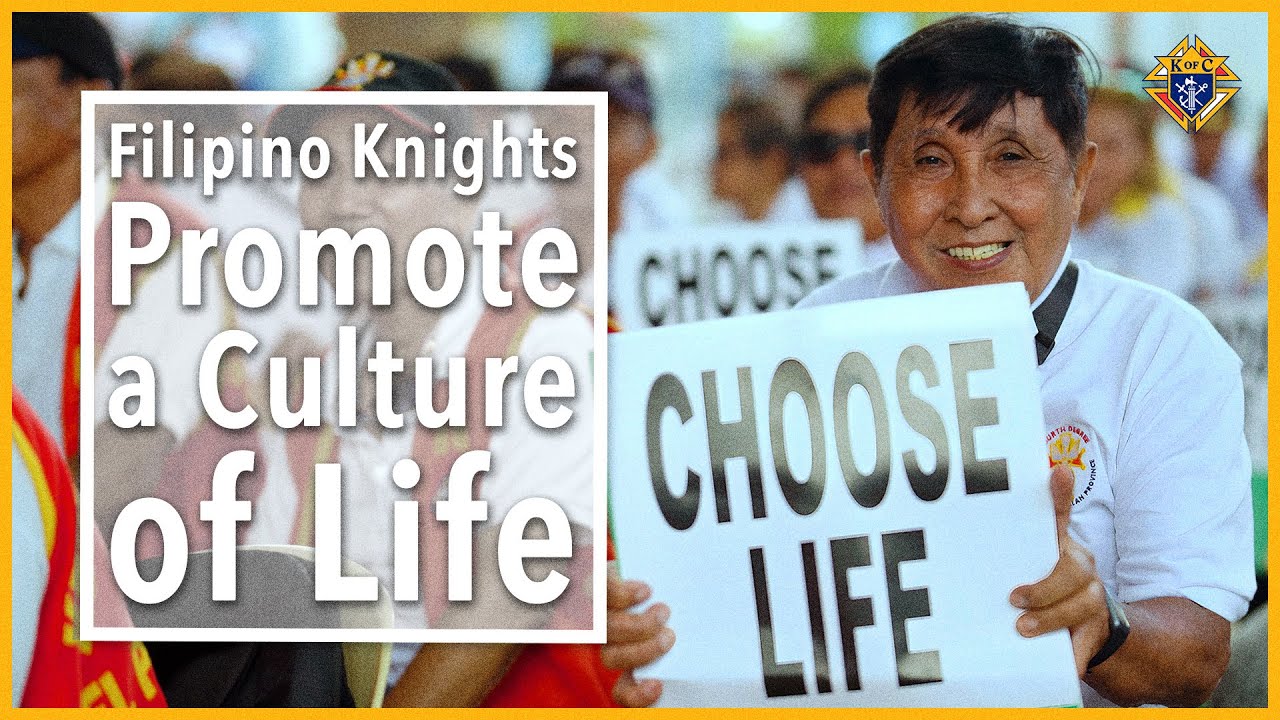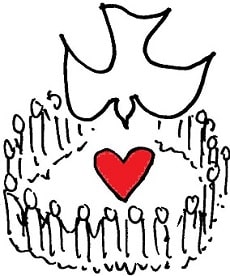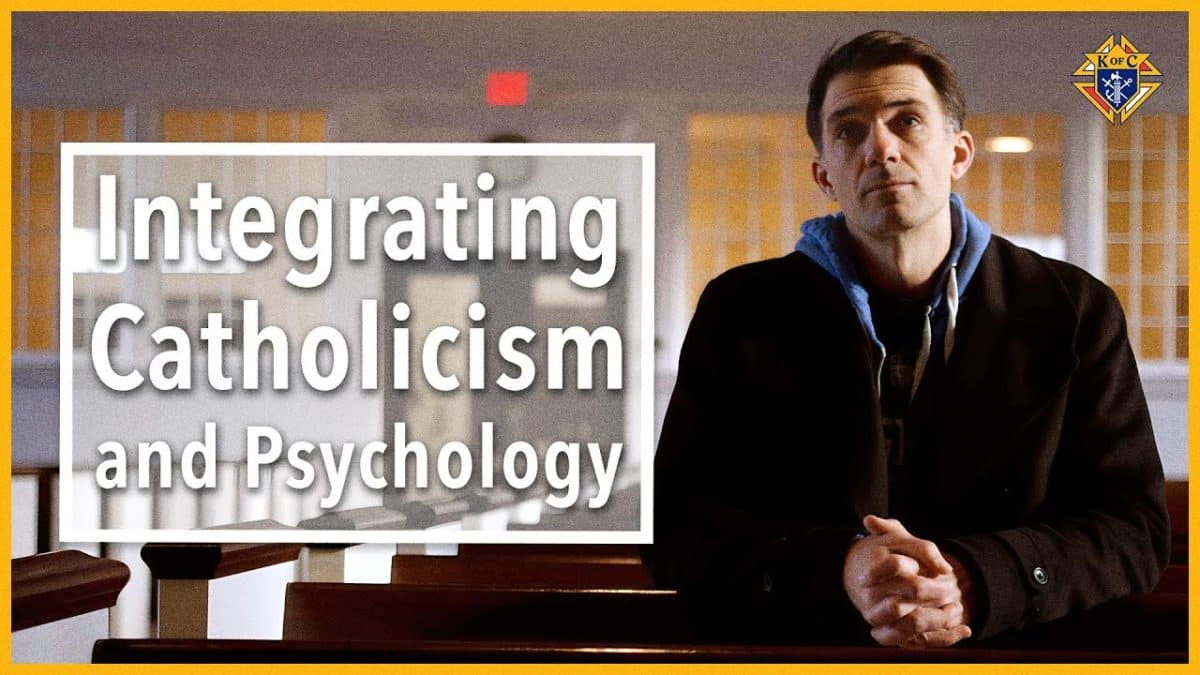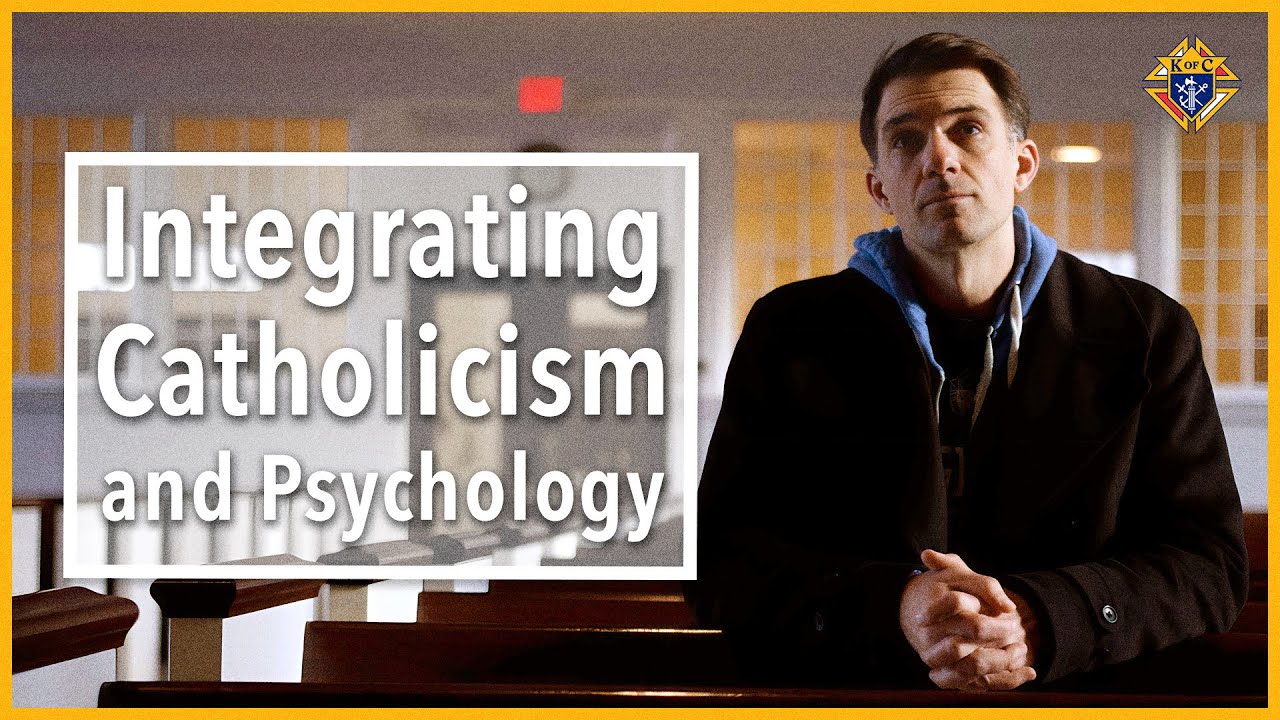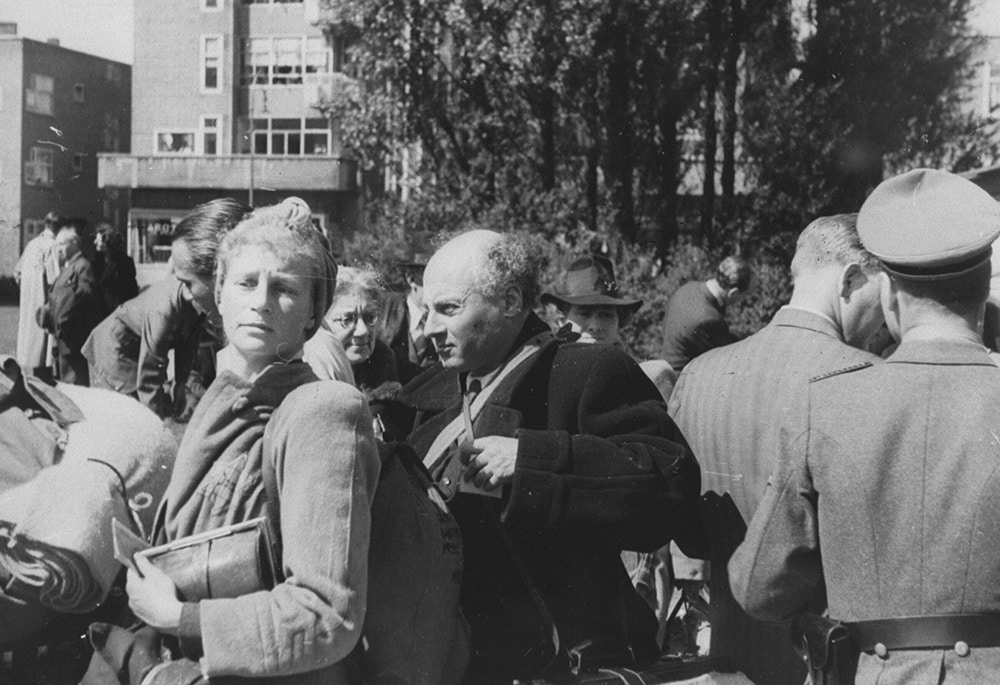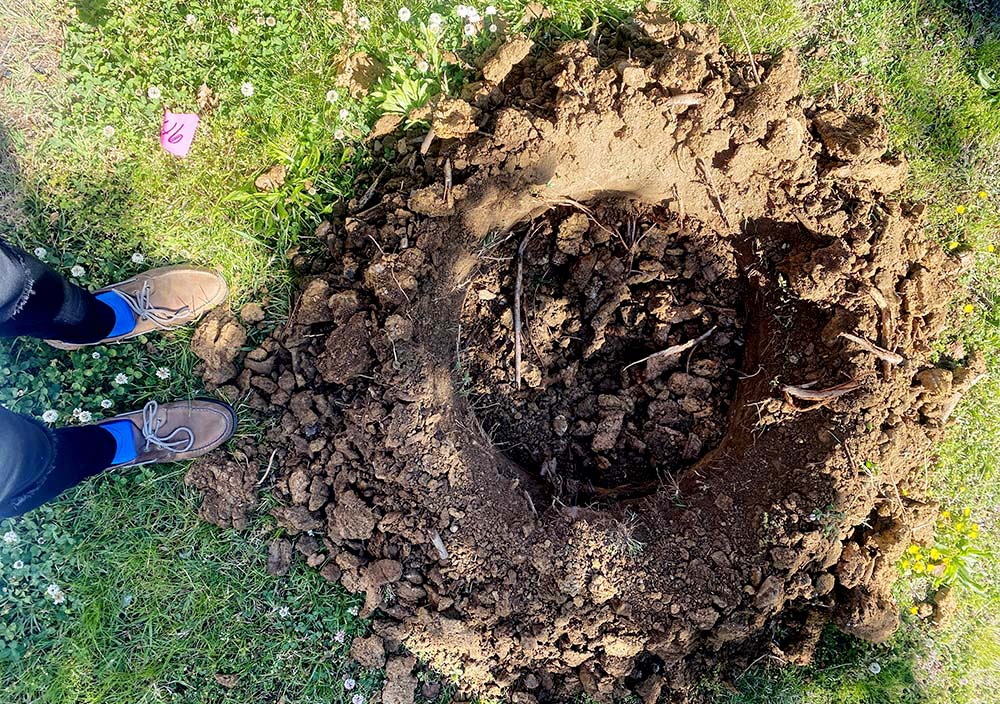Editor’s note: This story is part of « Growing a Green Church, » an ongoing series focused on churches’ efforts to steward their buildings and land effectively in the context of a changing climate. The project is produced in collaboration with The Christian Century, Episcopal News Service, Faithfully Magazine, National Catholic Reporter, and Sojourners, with support from the Solutions Journalism Network and funding from the Fetzer Institute. Find more stories in the series here.
As the school year sets at St. Thomas More Academy in southeastern Washington, D.C., students spring into action for a day of tree-tending.
Eighth graders at the Catholic elementary school swap books and computers for shovels, rakes and hoses and head outside to tend to the more than six dozen growing trees around their campus. They remove old mulch, add some new, and water each of the trees.
The experience is now an annual service project for the eighth grade class, said principal Gerald Smith. « For us to get out and learn about the trees. » And also to connect science with faith and the Christian duty to care for all of creation.
The trees, too, have added beauty and shade to a part of the nation’s capital with limited green spaces.
« Our students have taken a lot of pride in that work around building a care for our campus, » he said. « So I think that it has really done wonders for us, to extend the learning from inside of the school building to outside as well. »
The roughly 80 trees taking root at St. Thomas More are the result of a collaboration among several D.C.-area organizations. Together, the groups have planted tens of thousands of trees as they’ve embarked on a mission to increase the district’s tree cover at a time when development poses a continuing threat to existing green spaces.
One of the groups, Laudato Trees — a play on the name of Pope Francis’ 2015 encyclical « Laudato Si’, on Care for Our Common Home » — has sought out Catholic locations to plant American beeches and chestnut oaks alongside other native and well-adapted species, seeing potential in the church’s expansive property footprint in the nation’s capital.
The trees are free to the institutions, with the costs covered through local partnering nonprofits, including Casey Trees and Interfaith Partners for the Chesapeake.
In 2021, Laudato Trees formed as a volunteer team of five lay Catholics looking to use tree planting as a way to more deeply ingrain Laudato Si’ and church teachings around environmental justice across the Washington Archdiocese. While not an official archdiocesan program, the Laudato Trees group has the support of the local church, and several of its members are part of the archdiocesan Care for Creation Committee.
« Pope Francis talks about an ecological conversion. And I see this as a step on that path for a parish to take. It’s easy, it doesn’t require capital, it’s highly visible, and the parishes tend to get excited about it, » said Philip Downey, a founder of Laudato Trees and member of the archdiocesan creation care committee, as well as the one at his home parish, the Cathedral of St. Matthew the Apostle.
Growth in the DC church
The Laudato Trees team links prospective planting sites with arborists and tree-growing organizations. Within D.C. boundaries, that has come through Casey Trees, which has an endowment to grow trees in the district on private land at no cost to landowners.
For church properties in the Maryland counties within the archdiocese, Laudato Trees has worked with Interfaith Partners for the Chesapeake, whose Trees for Sacred Places program has planted more than 20,0000 trees. Through grant funding from the Chesapeake Bay Trust, the program covers the costs, which can range upward of $100 per tree.
To date, Laudato Trees has planted 583 trees at approximately 29 Catholic-owned properties, and has coordinated planting roughly 240 more trees at 15 additional sites later this year. That puts it in striking distance of its goal to add 1,000 trees in the district and five-county region of the archdiocese, which is home to 139 parishes, 90 schools and dozens more church ministries and organizations.
Said Downey, « We just started calling parishes and it was a pretty simple pitch: Hey, we’re the Laudato Trees team, and would you like some free trees planted in your parish property? »
So far, the Laudato Trees team has reached out to 80 parishes, a dozen schools and 43 other Catholic organizations. It usually starts with an email, then a follow-up phone call to explain the program and gauge interest. Downey describes it as « a process of persistence. »
When a parish or church group is open to the idea, an arborist visits the site to make recommendations on where, how many and which types of trees to plant. Once the parish or organization approves the plan, a planting day is scheduled and the trees — typically 6 feet tall — often are planted with the assistance of parishioners and students.
Casey Trees encourages growing medium- and large-sized trees in order to maximize the environmental and social benefits. The number of trees a property can plant varies widely, said Vince Drader, Casey Trees director of communications and development. Churches typically take 10-30 trees, while larger properties like Mount Olivet Cemetery planted more than 1,000.
In March, students at Elizabeth Seton High School, in Bladensburg, Maryland, took part in tree planting as part of a service day. Each of the 20 trees was « adopted » by a student’s family, who committed to caring for the tree until it is fully grown.
Daughter of Charity Sr. Mary Frances Hildenberger, a member of the advancement team at Seton, told EarthBeat that the day was part of a wider focus at the school on integral ecology — both in adding it into curricula and in taking part in the Vatican’s Laudato Si’ Action Platform.
« Yes, I do believe that the tree planting has led to a growing awareness of environmental concerns and the reality that everything is interconnected, » she told EarthBeat.
It was reading Laudato Si’ that brought Downey back to the Catholic Church. In his return, the now-retired urban planner and developer thought about all the land owned by faith-based institutions in the archdiocese and the issues he saw with how it was being used, especially in light of human-driven climate change: « not enough trees, large lawns, huge parking lots used once a week, stormwater runoff issues, no solar panels. »
He wondered, « Is there anything we can do here that would essentially motivate parishes to try and take action? »
He decided to start with trees.
Trees do more than spruce up a city’s appearance. They also bring benefits for community health and the local environment. Studies have found the positive health benefits of trees include reducing stress, boosting immune systems, improving mental health and even reducing crime.
Trees filter the air, absorb heat-trapping carbon pollution from the atmosphere, capture rainwater and help mitigate flooding, and provide habitats for animal species.
Trees also cool temperatures — an especially critical trait in cities where the urban heat island effect exacerbates health issues as paved roads and concrete buildings retain and radiate large levels of heat. Often, that heat is felt disproportionately in different areas of a city, as is the case in D.C., where temperatures in its northeast can be as much as 16 degrees Fahrenheit hotter than the rest of the city, according to findings from a 2018 study by the National Oceanic and Atmospheric Association.
Identifying ways to keep cities cool, with 80% of the U.S. population living in urban areas, becomes increasingly important as climate change drives temperatures higher. Vivek Shandas, a professor of climate adaptation at Portland State University whose research team pioneered the NOAA heat island mapping studies, said they have shown areas with greater canopy coverage have reduced temperatures.
As more and more cities plan to expand green spaces, location as much as quantity matters in how effective trees are.
« If our goal is to reduce temperatures, there are really strategic places and strategic placements of trees that would allow it to really provide the greatest benefit, » Shandas told EarthBeat.
Challenges to developing DC tree canopy
The nation’s capital has a deep-rooted history with trees. Tourists and locals flock each spring to the Tidal Basin for the annual Cherry Blossom Festival, and as far back as the 1800s, Washington, D.C., garnered the nickname « the City of Trees » for the thousands that lined its streets. As of 1950, tree canopy covered half of the district’s map.
But by 2001, tree canopy coverage had dropped to roughly 35%. A 1999 article in The Washington Post highlighted the problem and caught the eye of Betty Brown Casey, a longtime resident who formed Casey Trees two years later with the goal of reversing the trend by growing large canopy and native trees throughout the district.
On Earth Day this year, Casey Trees planted its 50,000th tree in Ward 8’s Fort Stanton Park. It planted more than 5,000 in 2022 and is on track to eclipse 6,000 trees in 2023, all toward its overall goal of 40% tree canopy cover in Washington by 2032, and 8,600 newly planted trees annually.
The District of Columbia, which today counts upward of 2 million trees, has set its own canopy goal of 10,500 trees planted each year, and the Maryland Legislature in 2021 passed a bill calling for the planting and maintaining of 5 million trees by 2031, with at least 500,000 sited in underserved urban communities.
While it looks to plant at all Catholic properties, Laudato Trees and its partners have used the city’s heat island map to identify places where new trees can have the greatest impact. That’s in part what led it to St. Thomas More Academy.
The principal, Smith, said that southeast D.C. lacks many green spaces. « So for providing access for shaded spaces, but also access to these green spaces for not just leisure, but to bring beauty to the area, was very, very important to us, » he told EarthBeat.
Like heat, trees in the capital are also unevenly distributed, with greater canopy coverage in the western and northwestern parts of the city, according to a 2017 U.S. Forest Service study. Wealthy areas had greater canopy coverage, and while impoverished neighborhoods saw higher rates of new plantings, they also experienced more tree loss.
Studies on the effectiveness of tree planting on reducing the heat island effect are still emerging, Shandas said, but attention has picked up as more cities and leaders have turned to trees as a cooling response to extreme heat.
Results take time, up to 10-20 years, for the real effects of tree planting on temperature to be measured, he explained. From his own studies using satellite imagery, infrared cameras and air temperature sensors, he has found that trees planted near sidewalks or buildings can cool temperatures roughly 1 degree each year as they grow.
« This is all just really emerging work, but we know from the computational models, from historical analysis of tree planting, that many of these cities have had clear results as a consequence of planting trees in their properties, » Shandas said.
In Brookland — nicknamed « Little Rome » as the home to Catholic University of America, the Basilica of the National Shrine of the Immaculate Conception and numerous other Catholic churches and monasteries — temperatures can be as much as 10-15 F hotter than in the Rock Creek Park, an affluent neighborhood in northwest D.C.
Over the past four years, the Washington Retreat House in Brookland has planted 50 trees on its property, through city programs that provide discounts on water bills, as well as with the Laudato Trees program.
« It does give a witness to other people, I think, if they know that it’s not just a landscaping project but it is something to help provide for those who will come after us to support the common good, » said Adorer of the Precious Blood Sr. Sara Dwyer, director of the Franciscan retreat house.
Dwyer told EarthBeat that mitigating the urban heat island effect was one of the motivations of adding trees to the property. Green spaces are important not just for health and environmental reasons, she said, « but also for this peace of mind to help people stay grounded and aware of Earth. »
But maintaining those spaces is becoming increasingly challenging in Brookland, she added, as trees are torn down and replaced with new housing units and office buildings.
Casey Trees’ 2022 Tree Report Card found that 1% of tree canopy, or 565 acres, was lost in D.C. between 2015 and 2020. That occurred despite the city exceeding its planting goal of 10,500 new trees last year by planting 12,111 trees.
« Really, the biggest challenge to trees in the city is the constant threat of development, » Drader said.
The population in D.C. grew 17% from April 2010 to July 2019, a rate faster than any other state or U.S. territory, according to U.S. Census data. After a small dip during the first year of the coronavirus pandemic, the population is again trending upward.
Following the population growth are investment dollars, with the Washington region leading the nation in overall investment, per a February analysis by the Urban Institute.
Along with development, city settings pose other obstacles to tree growth. On site visits, arborists with Casey Trees assess the location of power lines and utility lines above and below ground to avoid growing limbs and roots causing future problems. Special care is also needed to not disturb building foundations or cemeteries, some of which date back to colonial times. Traffic must also be factored into tree spotting.
« But those pale in comparison to the trees and land being lost to construction and development, » Drader said.
Ongoing commitment to creation care
Buy-in and maintenance can also be challenges, Drader said. The team at Casey Trees completes a tree care agreement with each of their sites that provides instructions on watering — young trees require 1.5 inches of rainfall or 25 gallons of water weekly during their first three years of life — and other steps to help the trees grow to full maturity. Weekly watering alerts are sent throughout the summer, and Casey Trees leads programs to teach about the importance of trees and how to care for them.
For the places it plants, Casey Trees provides three years of maintenance, including pruning and, if necessary, replacement. For parishes and Catholic properties outside D.C. in Maryland, maintenance is the sole responsibility of the property.
A benefit of working with faith-based organizations is there often is a group ready to take the lead on tree care, Drader said. From the Catholic groups he has approached, Downey has found tree plantings can open conversations about other ways their properties can be used — whether through solar power, energy efficiency or permeable parking lots — to benefit the environment.
« It’s a whole new level of consciousness that I think Pope Francis is talking about when he talks about ecological conversion, » Downey said. « So the question is, ‘Okay, if that’s our mandate, how can we be the best stewards of all this land? How can the land essentially help heal our ecological systems?’ «
At Thomas More Academy, the trees have raised attention around church teaching on creation care, Smith said. The faculty are exploring ways to incorporate them, as well as a new bioretention system, into the curriculum. One idea is to add plaques to identify the trees and provide additional information.
Ian Mitchell, director of the Washington Archdiocese’s office for social concerns, said that Laudato Trees offers a great example of how everyday Catholics can take the lead in implementing the archdiocese’s Laudato Si’ Action Plan.
« It’s a good partnership. It’s a good example of Catholics using their initiative to come to the service of both the church and our city and our region, » he said.
Partnerships with nonprofits like Casey Trees and Interfaith Partners for the Chesapeake have been crucial to the success of Laudato Trees, Downey added. Groups like Trees Atlanta, Sacramento Tree Foundation and the Cleveland Tree Coalition operate with similar missions across the country.
The Laudato Trees team continues to reach out to new Catholic parishes and organizations, as well as follow up with past ones and engage conversations with other denominations, including synagogues and Methodist and Baptist churches. Already, it has arranged 29 tree plantings with other religious traditions and has another 100 in the queue. As they do more outreach in Maryland, Downey said they’ll have to identify new sources of funding along with arborists.
The onetime urban planner, who earlier this year received the Canopy Award for Volunteer Service from Casey Trees, anticipates the Laudato Trees team will hit their 1,000 trees goal by the end of the year. And from there, they plan to keep growing.
« And then we’ll see how many more we can do. »
